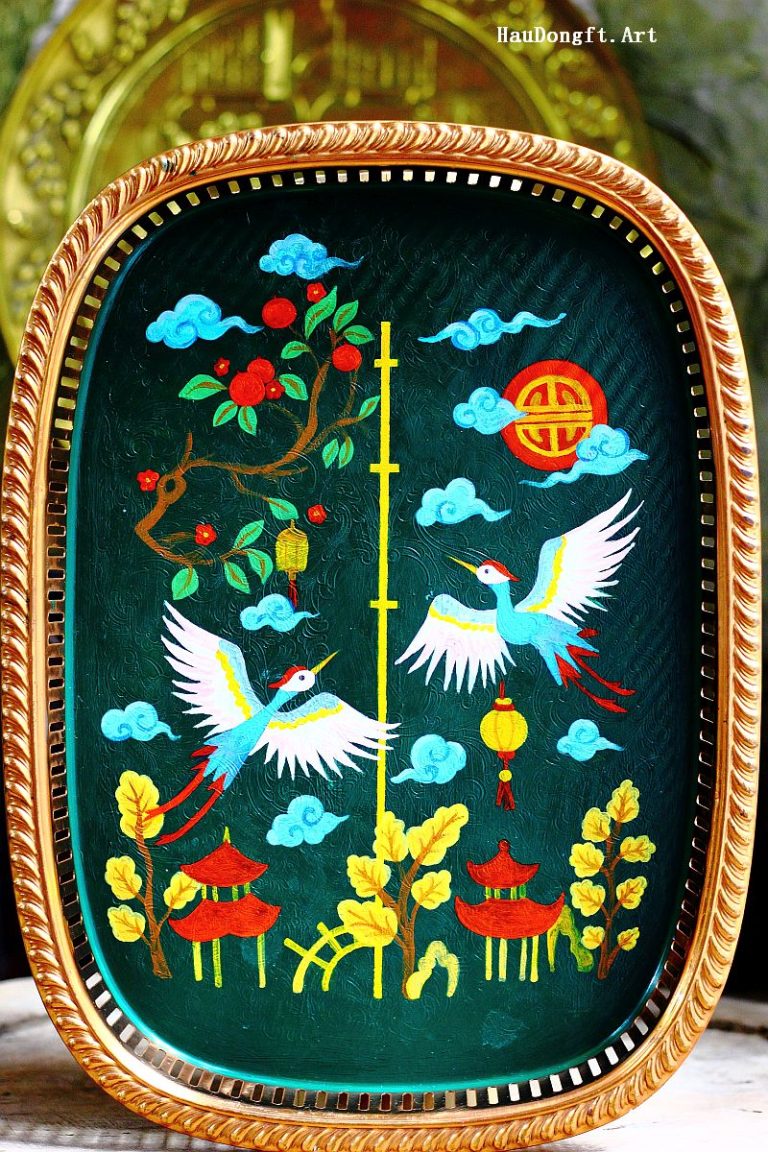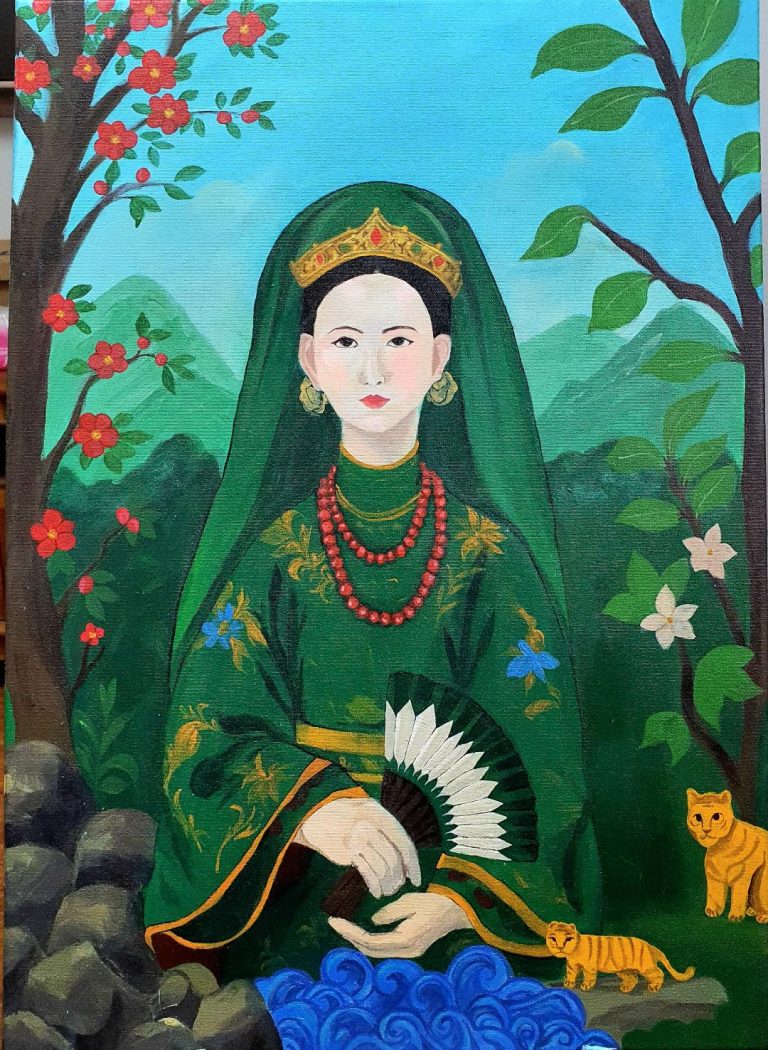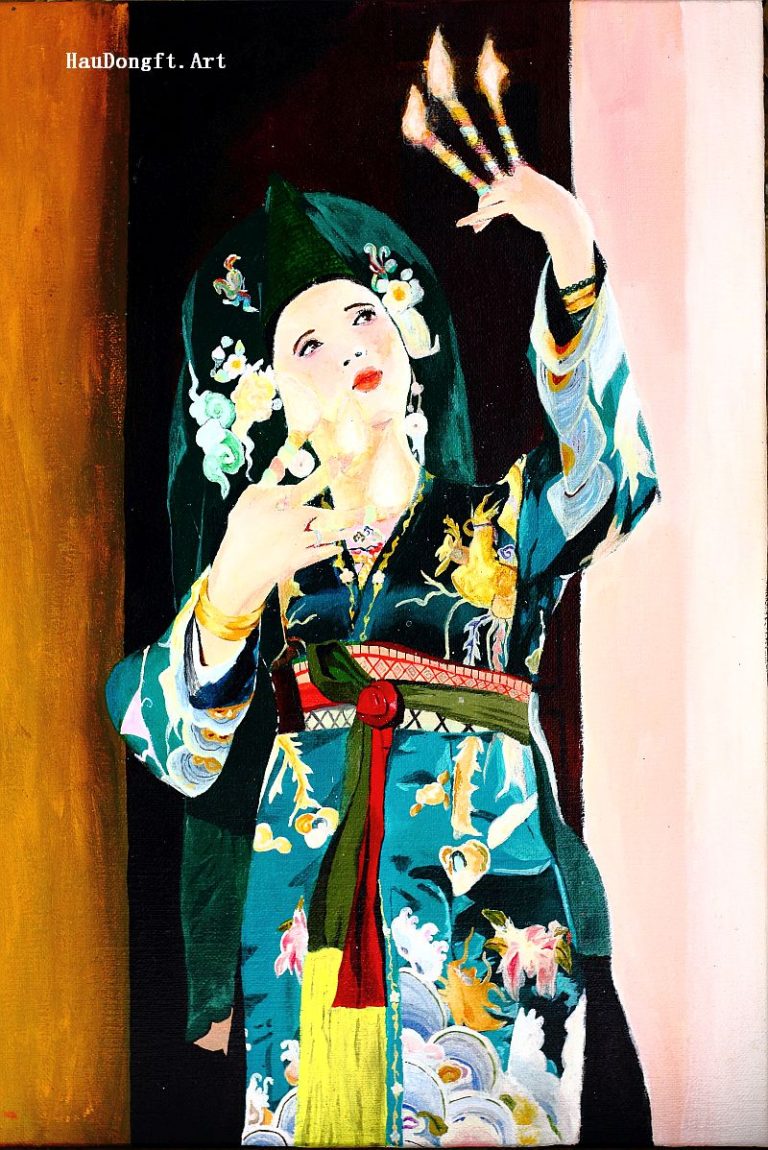Hát văn (ritual chanting) is a highly sophisticated art form that requires exceptional skill and versatility from the cung văn (ritual musicians). Beyond technical mastery, they must be agile and responsive, able to adapt lyrics, vocal timbre, and musical phrasing in harmony with the spiritual medium while preserving aesthetic quality. At times, the chanting must be repeated, embellished, or extended to bridge transitional moments between two phases of spirit possession (giá hầu).
The cung văn is tasked with conveying the psychological and emotional states of the deities, necessitating constant shifts in vocal style. Even within a single genre, variations abound: phú dựng and phú chênh express joy, while phú rầu conveys sorrow. Such transitions are underscored by shifts in pentatonic modes, reflecting the artistry and individual creativity of the performers.
Traditionally, the cung văn who plays the đàn nguyệt (moon lute) also serves as the principal singer. Yet, during hầu đồng ceremonies, even those responsible for rhythmic accompaniment—on instruments such as phách, cảnh, or drums—must also sing. The minimum requirement for a cung văn is the ability to keep rhythm while singing; the highest standard is to play the đàn nguyệt while singing.
Because rituals may extend for six to eight hours, additional musicians are often needed to sustain the performance. They alternate roles—singing, playing, or maintaining rhythm—ensuring the seamless continuity of the liturgy and the music. This highlights the remarkable versatility of hát văn practitioners.
Another striking feature of hát văn is the extraordinary duration of its performances. In traditional Vietnamese music, the largest orchestras are usually associated with the imperial court. However, in terms of performance length, the hát văn ensemble in hầu đồng ceremonies stands unmatched. This demands from the cung văn not only robust physical stamina but also strong and enduring vocal capacity.
Among master-level ensembles, performers are capable of duets and even choral singing. Veteran artists recall instances in which up to four cung văn sang in perfect coordination. Given the improvisatory nature of hát văn—in rhythm, pitch, melody, and syllabic phrasing—such collective singing requires extraordinary discipline and artistry, and represents a rare phenomenon within Vietnam’s traditional music.
Although many hát văn pieces exist in their original forms, performance practice often involves spontaneous improvisation by individual artists. For ensemble singing, meticulous rehearsal and coordination are necessary so that the performance produces a unified, singular variant of the work. This requires performers to synchronize rhythm and melody precisely, word by word and phrase by phrase—an especially challenging task in such an improvisatory genre.
Rhythmically, hát văn frequently employs syncopated patterns, which destabilize the listener’s sense of time and create a dreamlike, otherworldly atmosphere. Vocally, two principal stylistic traditions can be identified:
1. Nam Định Style – Characterized by simplicity and rawness, this style avoids elaborate ornamentation (nẩy hạt) and reflects the rustic qualities of folk singing, common in rural areas.
2. Hà Nội–Hải Phòng Style – Distinguished by abundant use of ornamentation, this style emphasizes refinement, elegance, and subtlety in vocal modulation and phrasing. Breath control techniques here resemble those of Chèo or Ca trù. This style flourished in urban centers, especially among educated and discerning audiences.
Deeply interwoven with Vietnamese spiritual traditions, hát văn has developed a rich system of rhythms and melodic structures, each associated with particular deities (Thánh) and palaces (Phủ). Percussion and rhythm hold an especially important role, heightening the atmosphere and enabling mediums to transcend ordinary consciousness in order to embody the deities. In conjunction with spiritual belief, this produces a heightened state of mind that allows extraordinary acts beyond normal capacities.
For a long period, Chầu văn was suppressed due to misconceptions and condemnation as superstition, leading to decline. However, in the early 1990s it was rehabilitated, regaining legitimacy and opportunities for revival. Yet, with the passing of many master musicians, the art has lost much of its living heritage. Only a small number of exemplary cung văn remain, and many are reluctant to perform publicly due to lingering distrust from past stigmas. Consequently, most contemporary practitioners have inherited only fragments of the tradition.
Thus, while Chầu văn has regained recognition, its future rests on the ability of current and future generations to preserve, cultivate, and transmit the profound cultural and artistic values embedded in this unique Vietnamese art form.










